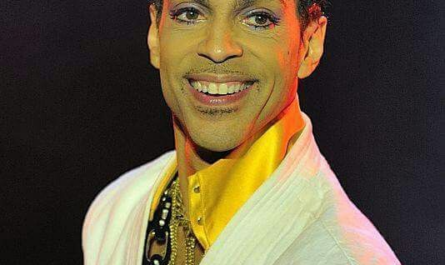Tom Brady’s Commitment to Self-Care and its Impact on his NFL Career
[bg_collapse view=”button-orange” color=”#4a4949″ expand_text=”Show More” collapse_text=”Show Less” ]
At 44 years old, Tom Brady continues to defy age and achieve at the highest level in the NFL. As the oldest starting quarterback in the league, Brady is in his 23rd professional season and just led the Tampa Bay Buccaneers to a Super Bowl victory in 2021. How has Brady been able to sustain such remarkable longevity and productivity far beyond what is expected for most NFL players? A key factor that has enabled his sustained excellence is his unwavering commitment to prioritizing self-care both on and off the field.
Brady understands that optimal physical and mental well-being are necessary to perform at an elite level, especially as an aging athlete. Throughout his career, he has followed disciplined routines focused on nutrition, recovery, mental fitness, and lifestyle habits. While self-care practices may seem like common sense, few athletes are as diligent and consistent as Brady in implementing strategies to maximize their health, fitness and performance potential. His dedication to prioritizing self-care on a daily, weekly and seasonal basis has undoubtedly contributed greatly to his unprecedented success in the NFL over two decades.
Sleep: A Consistent Bedtime Routine
Getting sufficient, high-quality sleep is one of the most important yet underrated aspects of self-care, especially for an athlete. Numerous studies have shown that poor sleep negatively impacts reaction time, cognitive function, muscle recovery and more. Brady recognizes this and prioritizes getting enough rest through a consistent sleep schedule. He has gone on record stating he aims to be in bed by 8:30 or 9 pm every night during the season to maximize his recovery and be well-rested for morning workouts and practices [1].
Brady’s sleep routine allows for approximately 8 hours of sleep each night. While this may seem early to some, it fits well within the 7-9 hours recommended for optimal adult functioning. Maintaining a regular bedtime, even on nights before games, helps regulate his circadian rhythms for consistent peak performance. It also gives his body and mind adequate downtime to recover from the physical and mental stresses of training and competition. Getting quality sleep is especially important for an aging athlete, as restorative sleep declines with age if not prioritized. Brady’s commitment to a regular sleep schedule has likely played a key role in allowing his body and mind to continually recharge and repair itself season after season in the NFL.
Nutrition: A Clean Diet Focused on Whole Foods
What we eat has a profound impact on our health, recovery abilities and athletic prowess. Brady follows a primarily plant-based, whole-foods diet focused on lean proteins, fruits and vegetables, nuts, seeds and healthy fats [2]. He avoids processed foods, sugars, gluten, dairy and most other inflammatory ingredients. Brady’s clean diet fuels his body with essential nutrients while limiting junk calories and toxins that could otherwise impair performance or recovery.
Staying hydrated is also a priority. Brady drinks around 125 ounces of water per day to support muscle function, joint health, cognitive performance and more [3]. Proper hydration is essential for an athlete, especially in a contact sport like football where dehydration can negatively impact strength, endurance and injury risk. Brady’s nutrition regimen gives his body the high-quality fuel and hydration it needs to withstand the physical demands of an NFL season and stay in top condition for as long as possible. Clean eating plays a key role in his ability to maintain an elite level of fitness well into his 40s.
Mental Fitness: Visualization, Meditation and Sports Psychology
While physical conditioning is important, mental toughness and focus are just as crucial for success on the football field. Brady utilizes various self-care strategies to enhance his mental fitness and resilience. This includes daily visualization exercises where he mentally rehearses game scenarios [4]. Visualization has been shown to improve performance by priming the brain and muscle memory for real-life situations.
Brady also meditates regularly, which he credits with improving his mental clarity, reducing stress and enhancing his ability to stay focused under pressure [5]. Taking even 10-15 minutes per day for meditation and deep breathing can significantly benefit cognitive function and stress management. He works with a sports psychologist to optimize his mental game planning as well [6]. Using mental skills training, Brady bolsters his concentration, composure, confidence and decision making on the field.
Prioritizing mental self-care plays a major role in Brady’s ability to consistently deliver clutch performances late in tight games, even during high-pressure playoff situations. His mental fitness regimen, developed and maintained over decades, has allowed him to thrive where lesser athletes would crack under pressure. It gives Brady an edge in maintaining poise and executing at a high level, even when facing adversity or advanced age.
Recovery Modalities: Massage, Cryotherapy, and More
While diet and lifestyle support overall wellness, targeted recovery strategies are also important for an athlete’s longevity. Brady incorporates various modalities into his routine to aid muscle recovery and reduce soreness between games and practices. This includes regular massage therapy to flush out lactic acid, improve circulation and reduce tightness [7]. Massage has been shown to speed healing and return athletes to play more quickly after injury or exertion.
Brady also utilizes whole-body cryotherapy, where the body is exposed to extreme cold temperatures for short periods [8]. This technique is thought to reduce inflammation, accelerate recovery and improve subsequent workouts or performances. He may supplement with additional therapies like compression therapy, contrast baths or float therapy as well [9]. Making recovery an priority allows Brady’s body to continually bounce back and avoid overuse injuries that could cut his career short. His multi-modal recovery approach has likely played a role in allowing his durability to defy Father Time.
Lifestyle Factors: Limited Alcohol, No Tobacco, Stress Management
Beyond diet and fitness routines, Brady’s lifestyle emphasizes additional self-care factors that promote healthspan. He avoids tobacco and only drinks alcohol sparingly, if at all [10]. Both smoking and excess drinking are known to accelerate aging and damage health over the long run. Brady also prioritizes stress management whether through meditation, spending time with family or unplugging from devices [11]. Chronic stress takes a physiological toll and impairs recovery, so finding an outlet is important.
Maintaining work-life balance is another priority. Brady makes time for hobbies like yoga, hiking and spending quality time with loved ones [12]. Taking breaks from football recharges him mentally and physically. He also gets annual comprehensive medical checkups and engages in preventative care [13]. Catching any potential health issues early supports continued peak performance. Brady’s holistic lifestyle approach centered on self-care has likely played an understated but significant role in sustaining his elite caliber well into his 40s against the odds.
Inspiring Others with his Commitment to Self-Care
Through his remarkable longevity and success, Brady has inspired millions of fans worldwide. However, his dedication to self-care sets an example that extends beyond just athletic accomplishments. Brady understands that to achieve greatness, one must first take excellent care of themselves – both body and mind. By openly sharing details of his routines, he educates others on simple yet impactful strategies for enhancing well-being at any age.
Whether it’s maintaining consistent sleep, eating whole foods, reducing stress or prioritizing recovery, Brady proves that implementing self-care practices on a daily basis can yield tremendous benefits over the long run. With more people facing aging-related health issues, his message promotes preventative lifestyle habits that may help combat chronic disease and functional decline. Brady walks the walk by living a values-based life focused on continual self-improvement. His commitment to diligent yet sustainable self-care serves as an inspiration for optimizing one’s health and happiness, regardless of profession or pursuits.
Conclusion: Self-Care as the Foundation for Success
At 44, Tom Brady continues rewriting the record books and achieving what few deemed possible in professional football. Behind his extraordinary accomplishments lies an unparalleled commitment to prioritizing self-care. From nutrition to recovery to mental training, Brady understands that optimal physical and mental well-being form the foundation for sustained excellence, especially as an aging athlete. While genetics may play a role, his longevity is a testament to the profound impact lifestyle factors can have on health and performance when diligently practiced over decades.
Brady’s self-care regimen maximizes his ability to continually adapt, recover and perform at his physical and mental peak. It has allowed his body and mind to withstand the intense demands of the NFL season after season, far surpassing expectations for what is considered an athlete’s prime. By making lifestyle medicine a priority, Brady has empowered himself to achieve greatness not just for a few fleeting years, but sustain it well into his 40s against all odds. His example proves that maintaining wellness through diligent yet sustainable self-care is key to unlocking one’s greatest potential at any stage of life.
[/bg_collapse]



